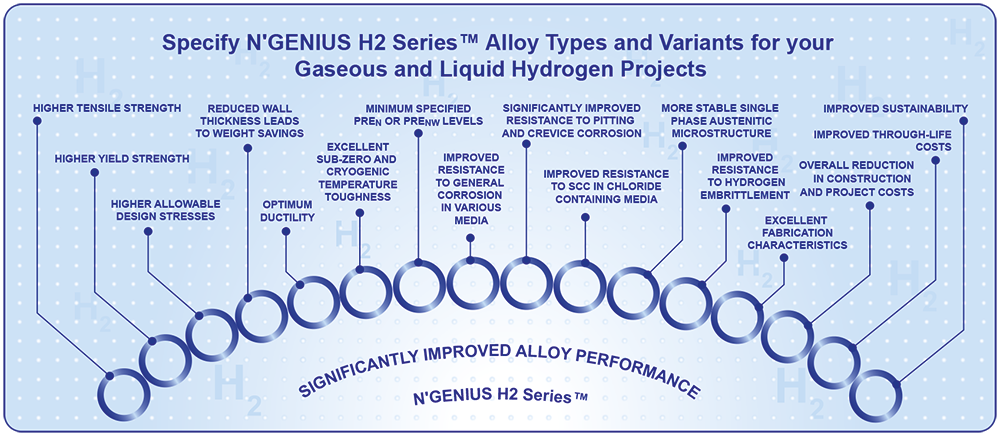A-2.4 Austenitic Stainless. Austenitic stainless steels generally provide the best performance of any structural metal in hydrogen gas service.
Hydrogen embrittlement in single-phase austenitic stainless steels has been primarily correlated with two metallurgical variables: alloy composition and the presence of secondary phases, such as ferrite and martensite.
Ferrite can be present in austenitic stainless steels as a result of material processing, while martensite can be induced by mechanical straining. Both ferrite and strain-induced martensite render austenitic stainless steels more vulnerable to hydrogen embrittlement. The ferrite and martensite can be intrinsically more susceptible to hydrogen-assisted fracture than the austenite matrix. Additionally, ferrite and martensite can enhance hydrogen uptake in the steels.
Alloy composition is perhaps the most important metallurgical variable governing hydrogen embrittlement in single-phase austenitic stainless steels […]. As an austenite stabilizer, higher nickel content, in particular, correlates well with resistance to hydrogen embrittlement. Data seem to indicate that more-stable austenitic stainless steels are preferable for hydrogen gas service.

